Diatom could be exploited as new sources of anti-cancer photosensitizer compounds for photodynamic theraphy (PDT). Different sources of nutrients can affect the metabolic pathways and gene expression of diatoms. This study aimed to identify transcripts encoding enzymes involved in the pathways related to two anti-cancer compounds in Cylindrotheca closterium. Two different nitrogen sources were used in this study, nitrate and urea. The pathways of 1,5 Aminolevullinic acid (5-ALA) and Pheophorbide a (PPBa) were analysed using Kyoto Encyclopedia of Genes and Genomes (KEGG). The cells were harvested at exponential and stationary phases for differential gene expression analysis by RT-qPCR. The results revealed the presence of twelve gene of interests (GOI). Additionally, Tub-β was found as the most stable reference gene. Urea medium treatment exhibited a general pattern of increase of the expression levels of all the GOI, with cells cultured in the stationary phase displaying higher gene expression compared to the exponential phase. By providing details on sequences and the condition with the highest expression of the GOI, this study provides new insights on the identification of genes candidates for genetic engineering experiments. As urea significantly increased the activation of GOI, it could be utilized in cultivation to facilitate commercial mass production of microalgal anti-cancer drugs.
promotor/supervisor feedback
nothing yet




